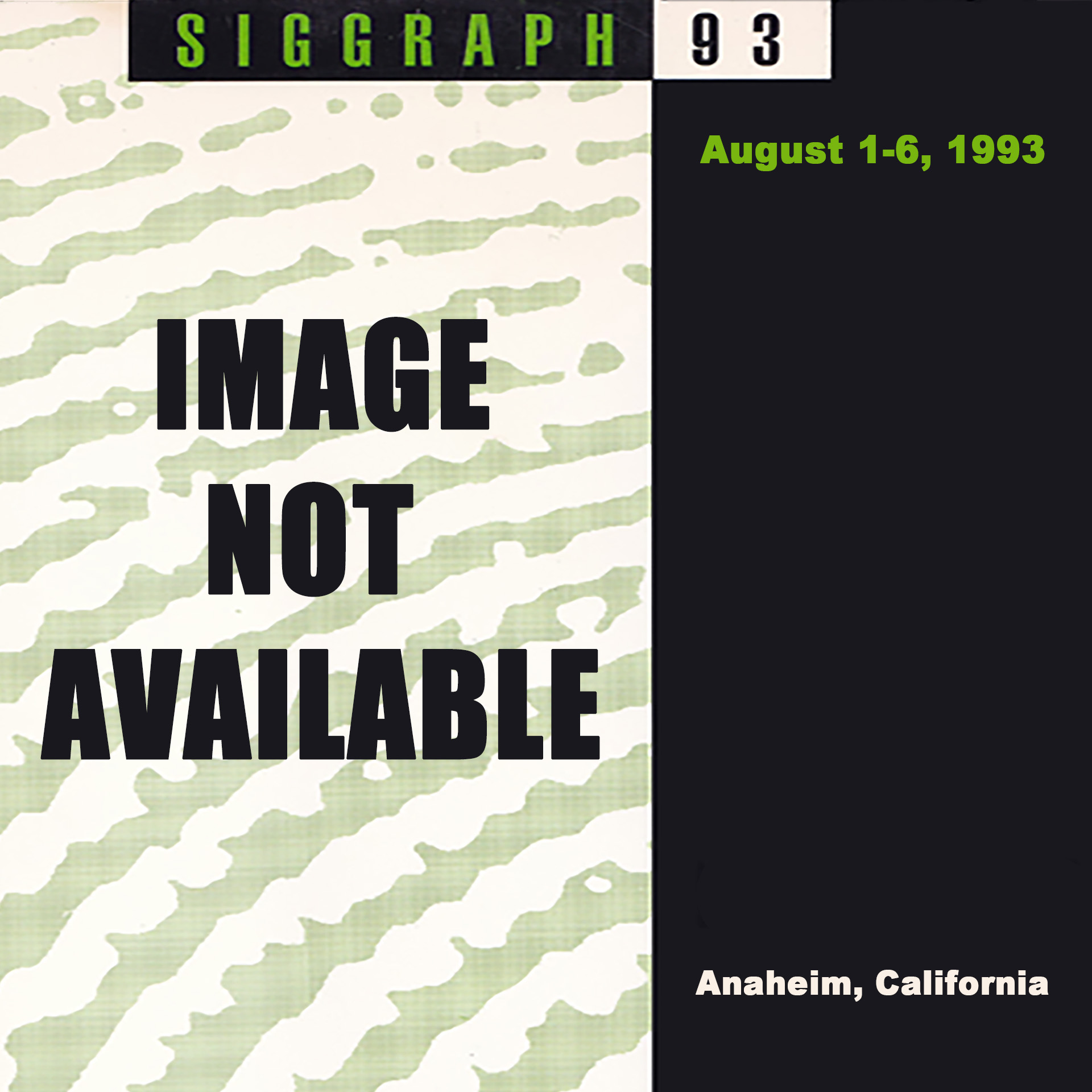“Pad: an alternative approach to the computer interface” by Perlin and Fox
Conference:
Type(s):
Title:
- Pad: an alternative approach to the computer interface
Presenter(s)/Author(s):
Abstract:
We believe that navigation in information spaces is best supported
by tapping into our natural spatial and geographic ways of thinking.
To this end, we are developing a new computer interface model
called Pad.
The ongoing Pad project uses a spatial metaphor for computer
interface design. It provides an intuitive base for the support of such
applications as electronic marketplaces, information services, and
on-line collaboration. Pad is an infinite two dimensional
information plane that is shared among users, much as a network
file system is shared. Objects are organized geographically; every
object occupies a well defined region on the Pad surface.
For navigation, Pad uses “portals” – magnifying glasses that
can peer into and roam over different parts of this single infinite
shared desktop; links to specific items are established and broken
continually as the portal’s view changes. Portals can recursively
look onto other portals. This paradigm enables the sort of peripheral
activity generally found in real physical working environments.
The apparent size of an object to any user determines the amount of
detail it presents. Different users can share and view multiple
applications while assigning each a desired degree of interaction.
Documents can be visually nested and zoomed as they move back
and forth between primary and secondary working attention.
Things can be peripherally accessible.
In this paper we describe the Pad interface. We discuss how to
efficiently implement its graphical aspects, and we illustrate some
of our initial applications.
References:
1. Sara Bly et. al.,Media Spaces: Bringing People Together in a Video, Audio, and Computing Environment, CACM, Vol. 36, 1993, No. 1., pp. 28-47.]]
2. Peter Burt, A multiresolution spline with applications to image mosaics, ACM Transactions on Graphics, Vol. 2, No. 4, Oct. 1983, pp. 217-236.]]
3. James H. Clark. Hierarichical geometric models for visible sulface algorithms. ACM Communications, Vol. 19, No. 10, Oct. 1976, pages 547-554.]]
4. William C. Donelson, Spatial Management of Information, ACM SIGGRAPH 1978 Conference Proceedings.]]
5. H. Edelsbrunner, A new approach to rectangle intersections, Part H, Int’l Journal of Computational Mathematics, No. 13, pp. 221-229, 1983.]]
6. S. Feiner and C. Beshers, Worlds within worlds: Metaphors for exploring n-dimensional virtual worlds. Proc. UIST ’90 (ACM Syrup. on User Interface Software and Technology), Snowbird, UT, Oct. 3-5, 1990, pp. 76-83.]]
7. Matthew Fuchs, unpublished Ph.D. dissertation in progress.]]
8. George Furnas, Generalized Fisheye Views, Human Factors & Computer Systems, CHI 89 Conference proceedings, pp. 16- 23.]]
9. Ralph Hill, et. al., The Rendezvous Language and Architecture, CACM Vol. 36, 1993, No. 1., pp. 62-67.]]
10. Hypertext on Hypertext, Macintosh Version: Disk #1 and #2. ACM Press, New York, 1988.]]
11. I. Lu et. al., Idea management in a shared drawing tool. Proceedings of the Second European Conference on Computer-Supported Cooperative Work-ECSCW ’91, Amsterdam, Holland, 1991.]]
12. J. Mackinlay et. al.,Rapid Controlled Movement Through a Virtual 3D Workspace. ACM SIGGRAPH 1990 Conference Proceedings.]]
13. Nelson Max, ACM SIGGRAPH 1975 Film show.]]
14. Minneman, S. and Bly, S.A.Managing a trois: A study of a multi-user drawing tool in distributed design work, Proceedings of the CHI’91 Conference on Human Factors in Computer Systems., New Orleans, La., 1991.]]
15. Ted Nelson, Literary Machines. Swarthmore, PA, 1981.]]
16. Jakob Nielsen, Non-command User Interfaces, CACM, Vol. 36 No. 4, (April 1993), pp. 83-99.]]
17. Ken Perlin and Luis Velho, A Wavelet Representation for Unbounded Resolution Painting, NYU Technical Report.]]
18. Franco P. Preparata, Michael Ian Shamos, Computational Geometw: An Introduction, Springer Verlag, New York, 1989.]]
19. David Small, Masters Thesis, MIT Media Laboratory, 1989.]]
20. Randall B. Smith, Tim O’Shea, Claire O’Malley, Eileen Scanlon, and Josie Taylor. Prelimina~7 Experiments with a distributed, multi-media, problem solving environment. In Proceedings of the First European Conference on Computer Supported Cooperative Work (Gatwick, UK) 1989, pages 19- 34.]]
21. J.C. Tang and S.L. Minneman, Videodraw: A video intelface for collaborative drawing. Proceedings of the CHI ’90 Conference on Human Factors in Computing Systems, Seattle, Wash., 1990.]]
22. S. L. Tanimoto, and T. Pavlidis, A hierarchical data structure for picture processing. Computer Graphics and Image Processing, Vol. 4, 1975, pp. 104-119.]]
23. Edward Tufte, The Visual Display of Quantitative Information, Graphics Press, 1983.]]
24. M. Weiser, The Computer for the 21st Centu~7, Sci. Am. 265,3 (September 1991), pp. 94-104.]]
25. Lance Williams, Pyramidal Parametrics. ACM SIGGRAPH 1982 Conference Proceedings.]]
26. Lance Williams, personal communication.]]




